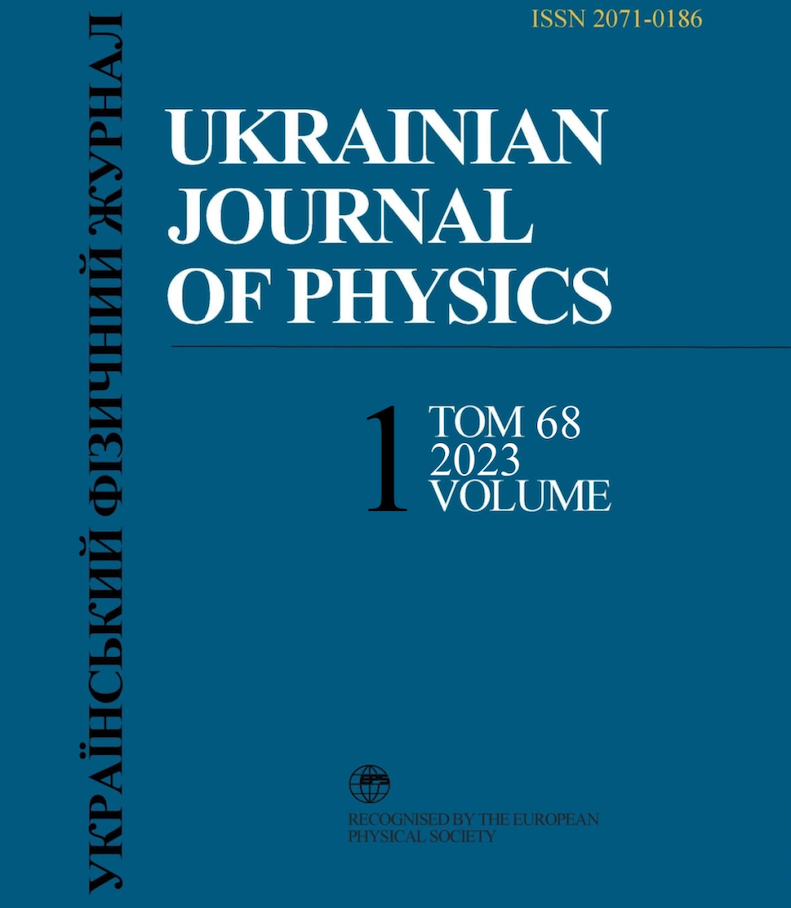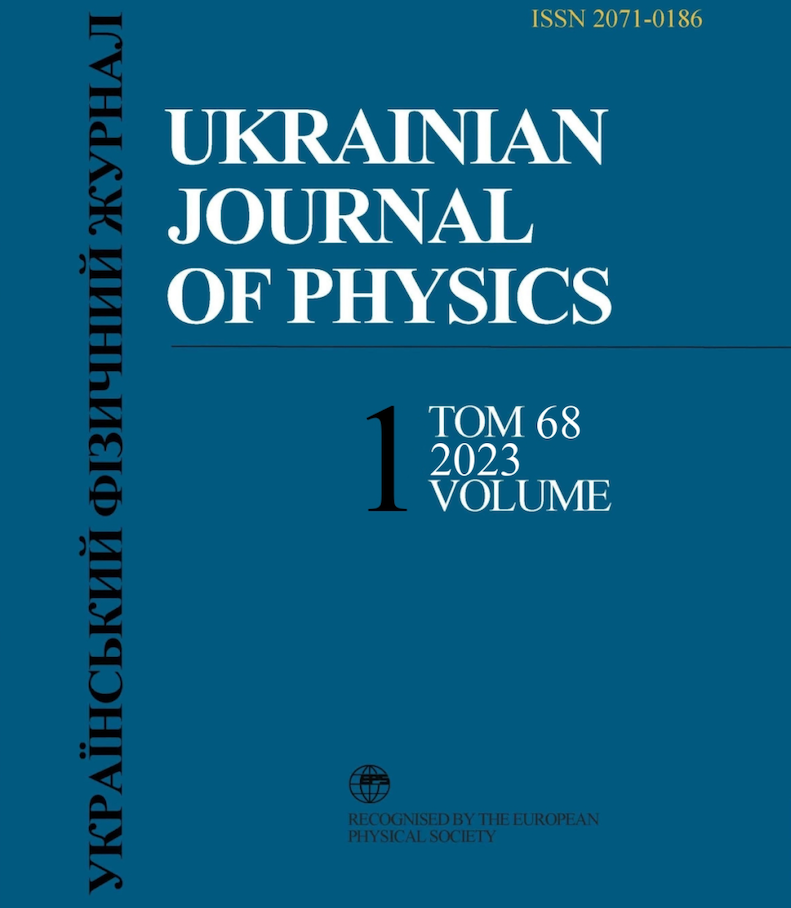Publishing Science in a War Zone
The war in Ukraine has now passed the one-year mark, devastating the nation and piling hardships on its citizens. Many science activities have been cancelled, put on hold, or transferred to other countries. But one of the pillars of research that has continued to operate is the Ukrainian Journal of Physics (UJP). The online publication, which offers papers in both Ukrainian and English, has suffered some delays, but the journal recently posted its first issue for 2023, marking its 12th installment since the war began. Physics Magazine contacted some of the researchers who publish in and edit for the journal to learn about their efforts to transcend the trials of the war.
“The feeling of danger for everyone with whom I communicate is the background of everyday life,” said Volodymyr Zasenko, the vice director of the Bogolyubov Institute for Theoretical Physics in Kyiv. Responding from Ukraine by email, he said that much of the scientific infrastructure—in particular the Kharkiv Institute of Physics and Technology—has been badly damaged by rockets, shells, and kamikaze drones. The buildings and labs that remain open face daily interruptions in energy and water supply, which can disrupt communications and harm sensitive equipment, Zasenko said.
Despite the difficulties, many Ukrainian physicists are still doing research and teaching. “Complications related to the war do not reduce the motivation of colleagues for scientific work,” Zasenko said. “They continue to do research with the same enthusiasm as before.”
One such physicist is Volodymyr Onyshchenko from the Lashkaryov Institute of Semiconductor Physics in Kyiv. In reflecting on the past year, he offered a grim picture of loud explosions, howling sirens, and power outages. “You cannot wake up or switch to another program,” Onyshchenko said in an email. “This is the reality.” While empty supermarket shelves are less of a problem now, sandbags and boarded windows remain constant reminders of the war. He described his anxiety and how important it is to talk it out. “In a conversation with others, you calm down, you feel better, and the fear passes.” He also said that concentrating on his research in condensed-matter theory helps to take his mind off the war.
Onyshchenko recently published some of his work in the UJP. The open-access, general physics journal, founded in 1956, is a monthly publication, supported by the National Academy of Sciences of Ukraine. Onyshchenko said it is important that the UJP and other Ukrainian journals keep publishing. “[Russian aggressors] wanted to destroy our economy, our faith in freedom, our future,” he said. “But we live; we cannot be destroyed.”
Boris Grinyuk—a particle physicist from the Bogolyubov Institute and the UJP’s deputy editor in chief—expressed a similar resolve. He said that the peer-reviewed journal has continued publishing despite some serious setbacks, including a recent missile strike that landed a few hundred meters from the building in Kyiv where the journal is produced. Hackers also attempted to infiltrate the journal’s servers. “But we are ready for such things and make a backup copy of the entire UJP every day,” Grinyuk wrote in an email from Trento, Italy, where he has a temporary research position.
The Bogolyubov Institute, which publishes the journal, has a tight budget right now, so the journal’s financing is insufficient, Zasenko said. But the small staff continues to run the journal on modest salaries. The main problem, however, has been a decrease in the number of papers submitted, Grinyuk said. This drop is partly due to the canceling of certain Ukrainian conferences that would generate articles. In addition, the UJP no longer accepts articles from Russian authors, who had been contributors before the war. Grinyuk asked that physicists from the US and other countries consider submitting a paper to the UJP to show solidarity with Ukraine (see APS News: What Can U.S. Scientists Do to Help Their Ukrainian Peers?).
A recent contributor to the UJP is Oleksii Khorolskyi from Poltava V.G. Korolenko National Pedagogical University. In a video call, Khorolskyi said that his city of Poltava is relatively far from the front lines, but the air-raid sirens still go off about four times per day, and the electricity is only available for certain hours. “It’s common that you’re giving a lecture, or having some online activity, and the power goes off,” he said. His students struggle with all the interruptions, but not all the classes are online—some are in person. “The students are happy to see each other,” Khorolskyi said.
Besides teaching, Khorolskyi does research on macromolecules. Before the war, he had planned to run some experiments in Kharkiv, but the institute there was too damaged by the early fighting. To avoid losing a step in his career, Khorolskyi began doing some preliminary experiments in Poltava, where he has a spectrophotometer and some other basic equipment. The results, which help explain pH evolution in saline solutions, were published in the last UJP issue of 2022. Khorolskyi said that he and his colleagues would like to run follow-up experiments using equipment in Odessa, but traveling within the country is very complicated, and obtaining the necessary funds is not easy. He adds that Odessa has a high risk of being bombed. “I admit being scared,” he said.
But like the other scientists interviewed, Khorolskyi expressed a strong desire to maintain normalcy. “We’ve got to live our lives,” he said. On the day of the interview, Khorolskyi was preparing to go to a nearby high school to judge student science projects. “We have to work and to raise our kids. We can’t stop. If you stop, everything will go away.” He said that Ukrainians have faith that they will overcome the aggression. He added that support from other countries is very important for the morale of his people. “We have a strong belief that everything is going to be good,” Khorolskyi said.
Zasenko also talked of the importance of outside support. “The international scientific community showed solidarity with Ukraine, and we are grateful for that,” he said. Ukrainian researchers have obtained free access to books and journals, as well as free membership in international research organizations. Some Ukrainian scientists have also been given positions in foreign countries. “We are glad that our colleagues have found shelter, but it is necessary to think about how to attract them—and in particular the younger generation—to return [to Ukraine after the war],” Zasenko said.
Several ongoing efforts foster science locally in Ukraine. Zasenko pointed out that many researchers at his institute, as well as other institutes in Ukraine, have received support from the Simons Foundation in the US. “The peculiarity of this grant is that it is aimed at scientists who remained in Ukraine,” Zasenko said. There is also a recent initiative to recruit international experts to evaluate applications to the National Research Foundation of Ukraine (NRFU)—a funding body like the National Science Foundation (NSF) in the US. The NRFU started in 2019, so it is a relatively young organization. “Currently, they have a roster of about 6000 reviewers, of whom 1000 are from other countries,” said Gerson Sher, a member of the NRFU’s Board of International Counselors and retired NSF manager. Increasing the number of international evaluators will help establish “the credibility of the foundation,” he said.
Offering to review grant proposals is an “easy way” for physicists from around the world to help Ukrainian science, Sher said. And as the past year of UJP issues shows, there are many scientists in Ukraine who continue to work and to dream of new projects that could use this help. “There is this myth in the scientific community that you can’t do science in Ukraine right now,” Sher said. “There’s nothing further from the truth.”
–Michael Schirber
Michael Schirber is a Corresponding Editor for Physics Magazine based in Lyon, France.





